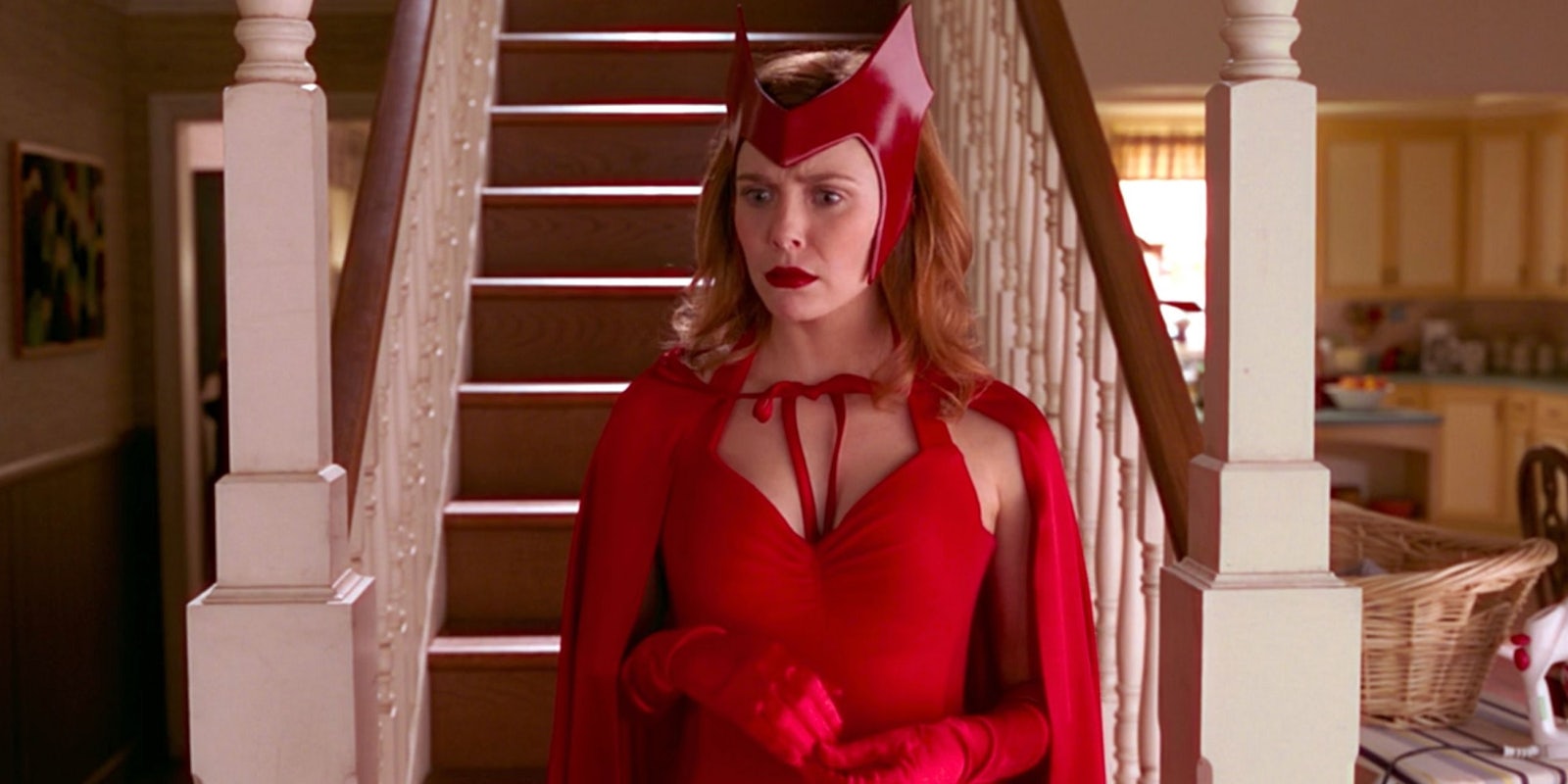Plenty of superheroes have convoluted backstories, but Pietro and Wanda Maximoff (aka Quicksilver and Scarlet Witch) are more complicated than most. Introduced as an X-Men villain in the 1960s, Scarlet Witch started out as Magneto’s mutant daughter, with Quicksilver as her twin brother. Their parentage was rewritten later on, revealing that Wanda and Pietro weren’t mutants after all. But throughout Marvel canon, the twins are generally portrayed as Romani, leading to some controversy around Marvel’s live-action casting choices.
Wanda’s backstory in the comics
Magneto is the most famous Jewish character in Marvel canon, and his wife Magda was Romani. Wanda and Pietro’s Romani heritage was canon for decades (including in their non-mutant backstory), although this depiction often had problematic undertones. Wanda is literally a mysterious foreign witch, a damaging stereotype that acquired more nuance in later comics. But instead of updating Wanda and Pietro as modern Jewish/Romani superheroes (much like how Black Panther‘s charismatic M’Baku started out as a villain named “Man-Ape“), Disney whitewashed them. This casting choice was divisive in 2013, when The Atlantic highlighted the negative connotations of casting a white blonde actress as Scarlet Witch. Roma people are a marginalized ethnic minority, and Disney chose to erase their presence from the MCU.
This choice was influenced by the legal divide between Disney’s Avengers franchise and Fox’s X-Men movies. The X-Men franchise includes a different version of Quicksilver (Evan Peters) who is Magneto’s son. Meanwhile, Disney wasn’t allowed to portray the Maximoffs as mutants, or as Magneto’s kids. So when the Maximoffs arrived in Avengers: Age of Ultron, writer/director Joss Whedon reimagined them as orphans from the fictional Eastern European nation of Sokovia. This rewrite was rather tone-deaf, because it involved Wanda and Pietro volunteering for neo-Nazi experiments. In the comics, their original parents were Holocaust survivors. Whedon also ignored the most obvious solution to Wanda and Pietro’s non-mutant backstory: Django and Marya Maximoff, their Romani parents from the comics.
Wanda and Pietro in the MCU
Elizabeth Olsen and Aaron Taylor-Johnson introduced Wanda and Pietro with awkward Russian-ish accents, which in Olsen’s case gradually smoothed out once she spent more time with the American Avengers. In Avengers: Civil War, Wanda’s bedroom also includes several crucifixes, a galling detail for people who wanted the films to reference her Jewish roots.
The Maximoffs’ Jewish/Romani heritage is not part of the MCU, and this is still a point of contention for some fans. Especially since Elizabeth Olsen, after seven years of playing Wanda, still doesn’t seem clued-in about the issue of Romani representation. Romani people experience widespread and life-threatening racism—particularly in Europe—and face toxic stereotyping in pop culture. “G*psy curses” still appear in modern movies, and if you’ve seen Borat or The Hunchback of Notre Dame, you’ve already seen examples of anti-Roma racism (aka antiziganism) on-screen. Back in 1998, Avengers director Joss Whedon faced backlash for using negative Romani stereotypes in Buffy. Meanwhile, actual Romani people barely appear in mainstream media. So it was dispiriting to hear Elizabeth Olsen describe one of her WandaVision costumes using a word that’s widely regarded as a racial slur. She had already been criticized for using this word on British TV.
This costume appeared in episode 6, which aired this week. It’s a Halloween story featuring an intriguing crossover: Evan Peters’ Quicksilver replaces the MCU’s dead version of the character. Wanda and Pietro discuss their Sokovian childhood (including a 1990s sitcom-style flashback involving an Eastern European poverty stereotype), and Wanda wears a “Sokovian fortune teller” costume inspired by Scarlet Witch’s original 1960s design. The show’s creators probably saw this as a throwaway joke, but it didn’t sit well with some viewers. By referencing fortune tellers (a well-known Romani stereotype) while reiterating the way Disney whitewashed Wanda (now depicted as a white suburban mom), the show compounded an ongoing problem.
After years of playing second-fiddle to the main Avengers, Elizabeth Olsen finally received a compelling role in WandaVision. But her character’s ambiguous ethnicity is still a stumbling block, with Olsen dropping careless slurs in interviews. If she was new to the role, this might be explained as a lack of awareness. But Olsen—and WandaVision‘s creators—are definitely familiar with Wanda’s extensive canon backstory, which includes comics explicitly addressing the issue of anti-Roma racism, and exploring her Romani heritage.
As is often the case, Wanda and Pietro’s whitewashing feels like an attempt to “neutralize” them. It frames their ethnicity as a problem to be avoided, rather than an opportunity to celebrate an under-represented group. This also meant that Marvel could cast famous white actors instead of sourcing an unknown Romani actor, during a period when the MCU was visibly uninterested in racial diversity.
But Marvel Studios wanted to have its cake and eat it, too. While Wanda is now white and Sokovian, her role isn’t completely divorced from its Romani origins. It can’t be, because everything in the MCU is informed by the comics. That’s how we end up with Elizabeth Olsen describing her Age of Ultron costume as “kind of this g*psy, vagabond feel”—terms that usually wouldn’t come to mind for a simple black minidress and maroon jacket. Wanda’s Romani heritage remains visible through veiled references and superficial costume choices, sidestepping any hint of meaningful representation.


